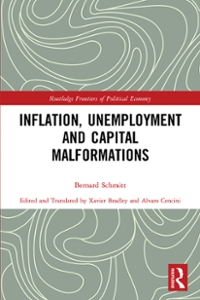3. A firm producing hockey sticks has a production function given by f(x1, 12) = 2VT112 In the short run, the firm's amount of input two is fixed at 12. 3.1 Calculate the firm's short-run total cost curve as a function of y, w1, w2, 12. 3.2 Suppose that 12 = 100, the price for input one is w = 4, and the price of input two is w2 = 1. Draw a graph of the short-run average cost with output y on the horizontal axis. Indicate on the plot the short-run average cost for the firm if it produces 25 hockey sticks, 50 hockey sticks, 100 hockey sticks and 200 hockey sticks. 3.3 Calculate the long-run total cost of hockey stick production. (That is, form the cost-minimization problem for this firm, find the contingent demand functions, and the cost function when the firm is free to vary both inputs.) 3.4 For w1 = 4 and w2 = 1, graph the long-run total cost curve for hockey stick production with output y on the horizontal axis. Show that the long-run cost is an envelope for the short-run curves computed in 3.1 by examining values of 2 of 100, 200, and 400.II. (50 points) Suppose that a firm has a Leontief production function given by y = min {Z/2, A/4), and that the rental rates for labor and capital are given by w=l and v=4. Suppose also that K is fixed at 200 in the short run. (1) Write down the short-run cost minimization problem of the firm. (2) Find the conditional factor demand function for labor and calculate the firm's short-run cost function. (3) Calculate the firm's average fixed, average variable, average and marginal cost functions. (4) Draw the graph of all short-run cost curves. (5) Now suppose the firm can choose the level of capital stock K in the long run. Write down the firm's long-run cost minimization problem. (6) Find conditional factor demand functions for both inputs and calculate the firm's long-run cost function. (7) Calculate the firm's long run average and marginal cost functions. (8) Draw the graph of all long run cost curves. (9) Explain graphically the relationships between long-run and short-run cost curves for the production function given above. (10) Explain the relationships between production functions and cost functions for this problem.3. A firm uses the production function f(X1, 22) = 21 72 . 1/4 1/4 Assume that the prices of the inputs are given by w1 = 16 and w2 = 1. (a) Is the production function exhibit decreasing, constant, or increasing returns to scale? What does this mean for the slope of the LRATC curve? (b) Find c(y), the firm's long-run total cost function. Hint: the firm will choose inputs to minimize it's costs. (c) Find expressions for the LRATC and LRMC curves associated with the function found in part (b). (d) Now suppose the quantity of input 2 is fixed in the short run. Find Cs(y, 72), the firm's short-run total cost function if input 2 is fixed at some arbi- trary level 2. (e) Use your answer from part (d) to find SRATC and SRMC when T2 = 16.II. (50 points) Suppose that a firm has a Leontief production function given by y = min {Z/2, A/4), and that the rental rates for labor and capital are given by w=1 and v=4. Suppose also that K is fixed at 200 in the short run. (1) Write down the short-run cost minimization problem of the firm. (2) Find the conditional factor demand function for labor and calculate the firm's short-run cost function. (3) Calculate the firm's average fixed, average variable, average and marginal cost functions. (4) Draw the graph of all short-run cost curves. (5) Now suppose the firm can choose the level of capital stock K in the long run. Write down the firm's long-run cost minimization problem. (6) Find conditional factor demand functions for both inputs and calculate the firm's long-run cost function. (7) Calculate the firm's long-run average and marginal cost functions. (8) Draw the graph of all long-run cost curves. (9) Explain graphically the relationships between long run and short-run cost curves for the production function given above. (10) Explain the relationships between production functions and cost functions for this problem. III. (50 points) Answer all the questions in Part II again when the firm has a Leontief production function given by y = [min {L/2, K/4) 1 1/2 or y = [min {L/2, K/4}]2










